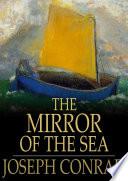
“The sea has never been friendly to man. At most it has been the accomplice of human restlessness.”
Source: The Mirror of the Sea (1906), Ch. 35
Context: For all that has been said of the love that certain natures (on shore) have professed to feel for it, for all the celebrations it had been the object of in prose and song, the sea has never been friendly to man. At most it has been the accomplice of human restlessness.
